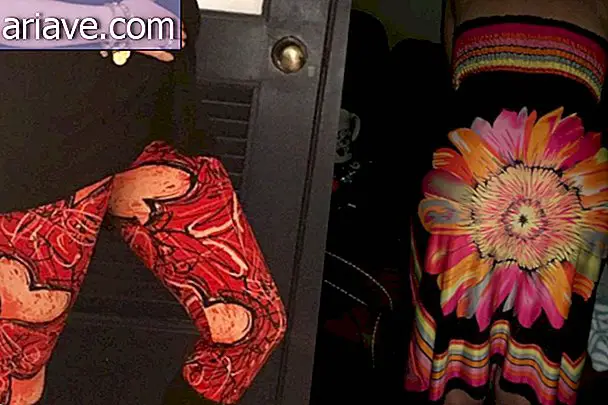9 Truths and 1 Myth in Biology
You must be following - or even participating in - the “9 truths and 1 myth” challenge, which is rolling on social networks, right? Because we here at Mega Curious decided to follow the current, but do it in an educational way! Here are 9 facts and 1 little lie about biological knowledge. In addition to introducing them to you, we will give a little justification for each one.
So, don't forget that there is only one myth ... Look at the following list for a while and then check out the justifications below. Just not worth the necklace, huh!
- 1 - Plants smell and see more colors than humans.
- 2 - Most living animals have skeleton made of sugar.
- 3 - From the analysis of few hairs, it is possible to know the gender, age, history of drug use, BMI and the origin of a person.
- 4 - Bees, polar bears and pandas are threatened with extinction.
- 5 - Birds are left over from dinosaurs.
- 6 - The largest penis / body size ratio is barnacles. These crustaceans have a penis eight times larger than the body.
- 7 - Human beings never lived with the big dinosaurs, but worms and snails did.
- 8 - The tongue of the bats is so large that it attaches to the breastbone (pectoral bone). In addition, bats that use echolocation see just by snapping their tongue.
- 9 - Faeces can also become fossils. Which is great for studying the diet of extinct animals.
- 10 - Plants grown in an environment that plays classical music grow better and healthier than plants that grow in an environment that plays rock music.
Now that you have your opinion, let's get to the answers!
1 - Truth!

Plants can perceive molecules in the air and react to them. This is why isolating them in a compartment causes them to mature, for example. It is a response to a gas called ethylene. Plants are also known to have much more light receptors than humans, and therefore “see” more colors.
2 - Truth!

Most of the species of animals that inhabit the earth today belong to the arthropod group. This group includes, for example, insects, arachnids, crustaceans, centipedes and gongols. All animals in this set have an external skeleton formed by chitin, a type of sugar.
3 - Truth!

From the analysis of the hair keratin, it is possible to deduce information such as gender, age, eating habits, history of drug use, BMI and even a person's place of origin.
4 - Truth!

Although the reasons are different - among them climate change, human activity and some other factors - bees, polar bears and pandas are unfortunately vulnerable and seriously threatened with extinction.
5 - Truth!

Amazingly, not all dinosaurs were extinct. The little dinosaurs managed to survive and left the descendants we now call birds.
6 - Truth!

The barnacle is not the animal with the largest penis. In this case, the winner is the blue whale! However, barnacles come out ahead in the penis size compared to body size.
7 - Truth!

The great dinosaurs went extinct about 65 million years ago, while the human species - as we know it today - emerged about 200, 000 years ago at most. Worms and snails, however, are older groups and some species have lived with dinosaurs.
8 - Truth!

The bats' tongues are quite large and they use sonar through the echo of the sound they make by clicking that organ. This is how those who do not have well-developed eyes recognize the environment around them.
9 - Truth!

Coprolites are feces that have gone through the process of fossilization and carry within themselves parts of the food that the animal that left it ingested. Thus, scientists can even profile food chains with this information.
10 - Finally, the myth!

Although some experiments in the past have attempted to demonstrate the effect of music on plant growth and development, it has been discovered more recently that music itself makes no difference. At most, the sound waves and their impact and temperature can affect the vegetables, but then it is independent of the musical style.
* This text is written by Marcus Cattem, Professor of Science and Biology. Thanks, Marcus!
***
Mega is competing for the Digital Influencers Award, and you can help us be double champions! Click here to find out how. Enjoy following us on Instagram and subscribe to our YouTube channel.











